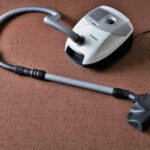Whether using a dryer or air-drying clothes on a traditional clothesline after washing them, it is important to understand how long the process takes.
Firstly, the right information facilitates proper planning. Take an instance where an urgent meeting comes up and the clothes you would like to wear are dirty. If the meeting is due in the next few hours, you might decide whether washing them is a viable option.
Secondly, if using a dryer, you get to determine whether it is working properly or not.
How long does it take to dry clothes in a dryer?

A tumble dryer is one of the most crucial home appliances. Unlike a clothesline, it uses both air and electricity or gas powered heat to dry clothes. Accordingly, it is reliable during both hot and cold seasons. Furthermore, it can dry clothes during day time and at night.
The length of time a dryer takes to dry clothes can range anywhere from 10 minutes to an hour or more.
Overall, this depends on many factors. The main ones include;
- Types of clothes
- Load size
- Clothes’ wetness
- Heat settings
- Appliance efficiency
- Appliance defects
Type of Clothes
Drying light shirts and t-shirts is not the same as drying towels, heavy jeans or blankets. The lighter the garments, the shorter it takes for a clothes dryer to dry them.
Ideally, the lightest fabrics take from 10 to 15 minutes to dry. On the other hand, heavy and stuffed laundry can take up to an hour or more.
Generally, loading similar items in a dryer is fundamental. It allows your garments to dry evenly and around the same time.
If you mix light items with heavy ones, the light ones will dry first. Subjecting dry garments to unnecessary heat as heavy laundry continues to dry can lead to shrinkage for some fabrics. It also contributes to misuse of energy.
Load Size
Loading your dryer to capacity is the same as filling a washer completely. You end up straining the machine thereby making it take longer than it should. Essentially, proper loading enhances machine efficiency.
From personal experience, I have found that a dryer works perfectly when it is loaded halfway or below. The approach allows air and heat to circulate properly in the drum.
Clothes Wetness
Your laundry takes longer to dry if is too wet when you put it in the dryer. In such a case, the problem originates from your washer.
A good washer should wring out most of the water from your clothes in the spin cycle.
Heat Settings
Heat settings in modern dryers range from regular to air fluff, permanent press, delicate, wrinkles release and more. As much as the technology is tailored to improve user experience, it can also be a bit confusing.
In general, choosing the wrong heat settings influences how long clothes take to dry. Reading the user manual and the care tag found in clothes can help address this challenge.
Appliance Efficiency
Generally, there are dryers that take longer to dry clothes. The problem is most common among energy efficient appliances. Even though they consume less power, they require more patience.
All the same, I still consider them a worthy investment. As the world moves towards a culture of energy conservation, they are the next best alternative to a clothesline.
Appliance Defects
A dryer can slow down after developing mechanical issues. However, it is important to eliminate all other possible problems before coming to this conclusion.
Firstly, check the lint trap. It might be completely caked up thereby causing the mess. Clean it thoroughly, load the dryer and observe any improvements.
Secondly, inspect the hose vent. If clothes fibers are left to accumulate in the lint trap, they find their way into the vent as well. Consequently, clogging disrupts the process of air circulation. The dryer responds by slowing down the drying process to prevent overheating.
If both of these areas are as good as new, contact experts for advice and possible repair of other parts
Some of the mechanical problems that can slow down the drying process include a faulty thermostat and damaged sensors.
Using a clothesline to dry clothes

Using a clothesline is one of the methods for air-drying clothes. It is a traditional method that is still in use today. Its benefits include:
- Cost Saving: Unlike a dryer, clotheslines are more cost effective. They cost less to buy, install and maintain.
- Energy efficiency: Clotheslines rely on sunlight to dry clothes. Accordingly, they support the current global agenda of conserving energy.
- Availability: Clotheslines are readily available and in a variety of styles. It is also possible to improvise one with materials that are easy to find in most homes.
- Keep clothes smelling fresh: The smell of clothes dried on clotheslines is so satisfying. Essentially, the sun helps with destroying germs and bacteria thereby eliminating bad smell.
The most common types of clotheslines include:
T-pole clotheslines: These are clotheslines that feature two posts with a t-like shape at the top and hanging lines that stretch from one pole to the other. They are mostly heavy duty and ideal for outdoors only. Additionally, they are suitable for people with compounds that offer space for permanent installation.
Drying racks: These are portable clotheslines that are suitable for outdoor and indoor drying. They are characterized by designs that make them favorable for hanging both clothes and shoes. They also make an excellent choice for people with space limitations because they are relatively small in size.
Retractable clotheslines: A retractable clothesline features a design that allows easy extension and collapsing. Ideally, it is extended when in use, and collapsed after unhanging clothes.
Accordingly, it is convenient for small spaces and an ideal choice for travelling.
Rotary Clotheslines: These are clothesline that feature an umbrella-like design. They rotate in such a way that clothes dry evenly from available sunlight and flowing air. The main advantage of rotary clotheslines is accommodating a lot of garments while taking little space.

How long does it take to dry clothes on a clothesline?
Overall, drying clothes on a clothesline can take as little as 30 minutes and as much as 24 hours or more. Light garments such as chiffon and sheer can even dry in 15 minutes under favorable conditions.
On the other hand, blankets, comforters and heavy wool are examples of laundry that can take more than 24 hours on a clothesline.
Below are some of the factors that determine the period in which laundry take to dry.
- Sunlight
- Wind
- Humidity
- Spacing
- Type of clothesline
- Time of the day
Sunlight
Sunlight is the biggest factor when it comes to hanging clothes outside. Firstly, it enhances the dry process by absorbing moisture. Secondly, it improves the smell of laundry by destroying the bacterial agents that cause bad smell.
Lastly, it is cost effective, does not stretch clothes and it can helps improve the appearance of white garments.
Generally, clothes dry faster and appear brighter on sunny days.
Wind
Clothes dry extremely fast in windy weather. In fact, they can even dry at a faster rate if it is both windy and sunny.
Wind enhances drying by increasing the circulation of air around clothes. Accordingly, wet air near laundry gets replaced by dry air constantly. This helps reduce the moisture content in your garments.
Humidity
The amount of moisture content in the air determines the rate at which clothes release water to the environment. If the humidity is high, clothes release moisture at a slow pace and the opposite is true.
Spacing
How you space your laundry in the clothesline determines the time they take to dry. Ideally, it is important to leave some spaces in between garments.
This allows the air to circulate properly thereby enhancing the drying speed. It also allows each garment to receive direct sunlight.
Type of Clothesline
All clotheslines do not dry laundry at the same rate. For example, rotary clotheslines are highly efficient because they rotate. In the process, they position clothes strategically for faster drying.
The placement of a clothesline can also influence the rate at which clothes dry. For example, if a clothesline is installed in an area where buildings and trees cast their shadow, clothes will always take much longer to dry.
Time of the Day
When hanging clothes outdoors, it is important to look at the time of the day. Mostly, clothes dry faster when there is sunlight, wind or both.





